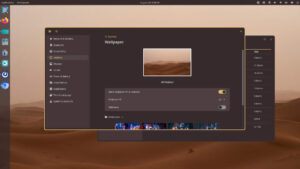The Heart of Linux
The lead developer of Pinguy Linux, Antoni Norman, has said he’s considering shutting the project down due to a lack of funds. This raises the question: How much do you give to the distro you use?
I think of them as our own little personal supernovas. There’s a brilliant flash when a Linux distro tosses in the towel and calls it quits. But whenever a distro goes away, it leaves behind the people who’ve used and worked with it on a daily basis. While there’s no formation of a black hole, there is a hole at the center of users’ work schedules and that disruption can do serious damage to those relying on the distro’s stability. And while getting a new distro installed and running isn’t the nightmare it used to be, it’s still a pain.
 A distro I used for two years, Pinguy, is considering lighting the fuse and exiting. There are a number of reasons why most distro developers quit work on their projects. Usually though, it comes down to two simple things: not enough time and not enough money.
A distro I used for two years, Pinguy, is considering lighting the fuse and exiting. There are a number of reasons why most distro developers quit work on their projects. Usually though, it comes down to two simple things: not enough time and not enough money.
I’m a distro user, not a builder. While I do contribute some of my talent and time to one distro or another, I’ve neither the skill nor the patience to write the code necessary for building a successful Linux distribution. But there is one thing I can do to help if I cannot do anything else. I can contribute some of the money needed in order to maintain the distro.
Of course, the mere mention of money for supporting a distro is akin to turning on the kitchen light at 2 a.m., sending all manner of creatures scurrying to the the safety of dark corners or spaces. And don’t go getting all indignant, I’ve been one of those scurrying creatures myself. A lot of times and often.
We’ve built an entire subculture on “free.” The free-as-in-beer freedom is what I am talking about. Whether with a distro and its community or with a software application, we have become accustomed to not paying a dime for anything. It’s come to the point, in certain places and communities, where even the mention of possibly charging anything for software or a service seems outrageous. People running around in circles with their hands flailing in the air like their hair was on fire.
“Well I’ll just quit using your distro if that happens!”
A number of years ago, a distro developer told me that if he had known the amount of work and dedication it would take to maintain his work and his community, he wouldn’t have started it. His ultimate failure came down to money. He quit developing his work and just faded out of the picture. It was sad. He had a fantastic distro in the works, but he simply couldn’t handle the incessant calls for help, and his forums were sparsely populated.
A number of years later, he lamented that in his opinion the whole distro game was rigged against the developer. He believed in the whole meme, “If you build it, they will come.” He knew he wouldn’t get an inch off the ground if he introduced the distro as not free as-in-beer. He’d tank inside of a month.
I’ve used Pinguy, as has my buddy Skip Guenter, who is still using it as his desktop system and has for three years now. Does he contribute? I’m not sure. I do know that I manage to contribute $500 a year, spread across three to five organizations. I’ve done so for the past four years.
I don’t know what Antoni Norman needs annually to operate Pinguy, but I wouldn’t pitch in the towel until I had a heart to heart with my user base. I would tell them what my needs are financially and then try to decide how many able-paying users who are willing to donate I have. From there, he could at least get an idea of what his future as the creator of Pinguy has in store for himself.
I would urge Norman, though, to keep in mind that there are people who will refuse to pay his effort anything at all, regardless of their financial situation. Some people are just terrible when it comes to understanding the work someone goes through to make their lives better.
Here’s hoping he can urge enough of his users to kick in a tenner a month. Given everything, that seems like a small price to pay for one of the better distros being used today. Me? I’m good for $50 if he sticks it out another month. Hopefully, that may set an example.
We’ll see.
Ken Starks is the founder of the Helios Project and Reglue, which for 20 years provided refurbished older computers running Linux to disadvantaged school kids, as well as providing digital help for senior citizens, in the Austin, Texas area. He was a columnist for FOSS Force from 2013-2016, and remains part of our family. Follow him on Twitter: @Reglue






While I think many people are just cheap and lazy, it’s natural to think of donating to a distribution as donating to any other charity.
When that happens, you have to ask yourself whether it makes more sense to send $50 to Pinguy/Arch/Fedora/Ubuntu/Xubuntu/FreeBSD/whatever, or to the local food kitchen, or a missionary group, or wildlife preservation, and so forth.
I donate to the distributions I use, less than they deserve. But my (comparatively) big monetary donations go to food charities.
I have not donated to a Distro, yet. I am getting close to doing that, probably it will be Ubuntu; so I can at least help cover the costs of running the servers that everyone else uses. Or should that be Debian?
Time to ask ourselves, “how much stronger would the Free Libre software be if we all donated what we can?”
I also believe that the task of maintaining a distro is far too much for one person to do, unless we want to pay him or her a living salary.
My support of Slackware consists of a subscription. New release? Cool, charge the card and send me a DVD set.
I’m currently running on Fedora, but I like slackware and keep the subscription active because of that. Oh – and I installed slackware on my mom’s laptop several years ago when she got a new one (at her request). She’still running it too.
One of the reasons I use Linux is bcos it is free, if it was not free, then I would have gone for BSD ,Also I live in 3rd world country where salary is low and we cannot afford to buy software.
I’ve donated to Ubuntu, despite it being loathsome, just because it seems like the right thing to do.
I’ve also donated to Mageia because it’s awesome, amazing, and really deserves it.
My favourite distro (even more so than Mageia) is OpenSUSE, which is a bit of a conundrum as they only ask for hardware donations and I have a hard time deciding how to handle that.
If you have a look at Linux Mint, their donations are looking healthy. A year or 2 ago they were only getting 2 – $3,000 in donations a month.
The month of March 2016 raised quite a bit, see below…
A total of $14286 was raised thanks to the generous contributions of 574 donors.
So depending on how many developers Mint has…lets say 2 or 3, then $14,000 a month makes it quite profitable.
Before starting a Distro, people need to fully research what it takes.
It really depends on what the lead developer wants from the project, what is the end goal? Do they eventually want to turn it into a full time income? Are they doing it for ego? Is it an altruistic pursuit? Is it an opportunity to give back to something they have taken from for months/years from open source and free software? Maybe it’s a combination of some or all of these.
If you set a goal, you will normally do whatever it takes to get there, depending of course on how driven and motivated you are. Creating a distro is a multifaceted project. Support, development, community management, and yes, marketing. Some of those who start out on this journey have little to no experience in these fields, especially marketing. Your distro is a brand whether you acknowledge that or not. If you don’t treat it like a brand, but you need it to make a certain amount of money, you are setting yourself up to fail, and this will end up impacting badly on your users. The latter is the most important consideration of all.
Your brand is made up of the following – how your distro looks – theming, social media presence, how you interact with others online, the usefulness of the software you offer, information on your website, selling merchandise etc. Are you doing ALL of those things in such a way that it has mass appeal? So many distros are a hodge-podge of ideas, software and themes, there’s no consistency or uniformity. It’s no surprise as some distro maintainers aren’t graphically trained. It’s no coincidence the most successful distros are graphically pleasing and have great looking, informative websites.
This isn’t an attack on project leaders, it’s a reality check for those who are thinking of maintaining a distro. Your project is going to cost money to maintain, you better have a plan before you start. You wouldn’t go to the Bank and ask for a $50,000 loan to start a business with no business plan? The Bank would laugh at you and send you packing.
Set a goal, research what it takes, educate yourself in areas you are weak, have a plan in place, and stick to it.
Jerry Bezencon
Linux Lite Project Leader
My distribution project (http://www.microlinux.eu) is based on Slackware Linux, which I support with two subscriptions, one for the boxed CD set, one for the DVD, aside from buying stuff like t-shirts, baseball cap, bumper stickers. I’m also quite active in the Slackware forum on LQ, and I try to help out by answering questions as much as I can.
Cheers from the sunny South of France.
I always give a donation, e.g. $50 USD, to any Linux distribution that gets permanently installed on any of my computers and it’s not very much when compared with the combined price of a Microsoft operating system, MS Office, etc.
In this particular case, the distribution mentioned in the main article appears to have suffered a drop in popularity coincident with certain controversial actions that took place in late 2014 and early 2015 and that were covered on Techdirt.